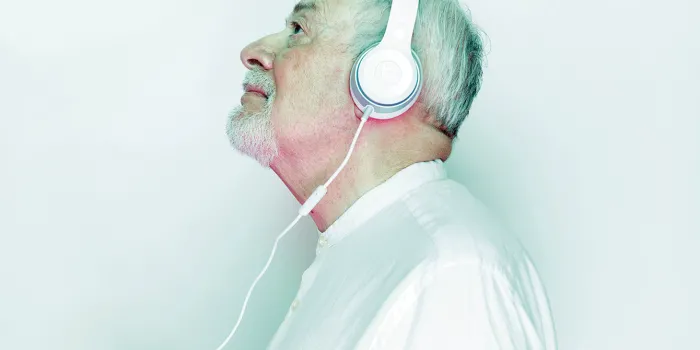Does Pharrell Williams’ Happy buoy your spirit during your morning walk? Does listening to Vivaldi soothe you after a tough day at work? The fact is, you prescribe yourself music all the time.
A tune can make you feel happy, excited, disconcerted or even heartbroken. “Music is an incredibly complex stimulus—the most multifaceted in nature for the brain to process,” says music therapist Tim Ringgold, MT-BC, director of Sonic Divinity Music Therapy Services in Orange, California. Listening to music involves several regions of the brain, including those that affect emotion, cognition, sensation and movement. So it stands to reason that it could also help treat issues in all those areas.
The idea that songs can have therapeutic powers dates back to early civilization, where it can be found in the writings of ancient philosophers Aristotle and Plato. Music therapy developed as a formal practice in the wake of World War I and World War II. Doctors treating hospitalized veterans noticed their patients improved both physically and emotionally following concerts by community musicians.
Music, whether it’s being listened to or performed, can help relieve the pain associated with a wide range of ailments, and it benefits people of all ages. Music therapy is an effective method of what experts call “procedural support,” or helping a patient get through a procedure that is anxiety- or pain-producing.
Many of the pathways the brain uses to process music are the same as the ones that process pain. So if the brain is focused, for instance, on the melody of a Mozart concerto, there won’t be much room left to relay the pain messages coming from a needle stick. Tunes can also help you relax and feel less anxious.
In addition to lessening acute pain, music can also help decrease chronic pain from recurrent bleeds in muscles and joints. You’ve probably heard of the runner’s high, where the brain releases endorphins—feel-good chemicals—during a sweaty exercise session. Music prompts the brain to produce these same endorphins. “Patients frequently report decreases in their own perception of pain, anxiety and nausea after a typical 30-minute music therapy session,” says Ringgold.
“We use the phrase ‘music therapy’ when there are three ingredients present: A client, music and a therapist,” says Ringgold, who’s presented sessions on the benefits of music therapy in managing bleeding disorders at the National Hemophilia Foundation’s (NHF) annual conference and at NHF chapter events.
Working with a board-certified music therapist can be useful because he or she can evaluate your needs, taste and interests. A therapist can also answer detailed questions about types of music and levels of listening that are nuanced but critical to music therapy’s success.
DIY Music Rx
1. Pick your tunes
Begin by choosing music that makes you feel good, whether it’s classical, country or show tunes.
2. Feel the beat
Listen to, play or sing whenever you think you need it, such as while getting a needle stick during an infusion.
3. Watch the volume
Playing music too loudly, especially if you’re wearing earbuds, can damage your ears.
Learn More: There are currently more than 7,000 board-certified music therapists nationwide.
The American Music Therapy Association can provide you with a free list of qualified music therapists in your area. Contact them at musictherapy.org/about/find/.

